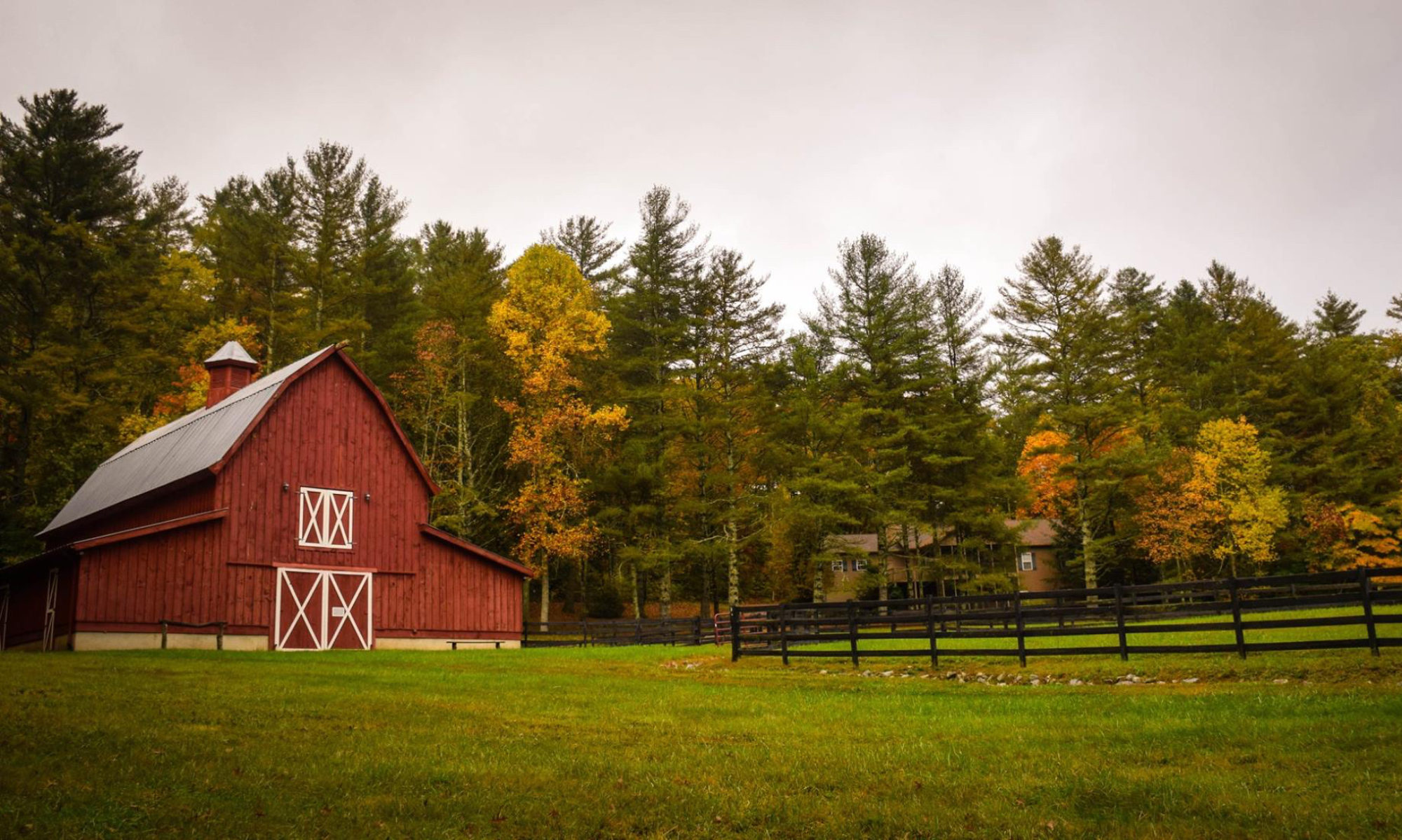Before you catch yourself nodding in agreement with that title I have to warn you, Jim Branscome doesn’t agree:
[T]he reality of what really drives the rural American economy is Wal-Mart and the 39 other companies in the Yonder 40.
But perhaps I should back up and explain how we got to this point in the debate before I offer my full rebuttal of Jim’s claim. About a month ago the Daily Yonder asked Jim Branscome to come up with an index of stocks that represent the economic well-being of rural America. In unveiling the resulting Yonder 40, they proclaimed:
Finally, there’s a stock index that tells rural America how it’s doing. This is the Yonder 40, forty companies that reflect the economy of rural America.
It is an interesting idea, but there is a slight problem. It seems that a number of the companies selected for the Yonder 40 are companies whose interests and goals actually stand squarely at odds with the well-being of rural American – be it economic or otherwise. I first expressed this in a comment posted at Daily Yonder:
What does the Yonder 40 tell us?
This is an interesting idea — an economic indicator of the relative health of rural America. But what will we really know when the Yonder 40 soars, and when the Yonder 40 falls? With stocks like Wal-Mart, Tyson, Smithfield, Monsanto, and ConAgra included in the index, the economic health of rural America might in fact be measured as an inverse of the Yonder 40.
When Wal-Mart is doing well, businesses up and down main street in rural communities are being driven out of business. And when Wal-Mart is doing well money is being sucked out of rural communities, destined for the pockets of rich urbanites.
When Smithfield is doing well, farmers aren’t receiving a fair price for their livestock. And when Smithfield is doing well, family livestock producers are being put out of business. And so it goes for a number of the stocks in the Yonder 40.
So, what does the Yonder 40 really tell us?
To the credit of the editors at the Daily Yonder, they picked up on my comment, and repeated the question in a follow-up post about their stock index. They also went back and asked creator of the index, Jim Branscome, to respond to my concern about the reliability of concluding that when Wal-Mart (and other companies in the index) are doing well, rural America is doing well. This drew a response from Jim:
None of us may like it and would love a stock index that reflects the hard work of the small farmer and throws in the sweet smell of alfalfa drying in the windrow, but the reality of what really drives the rural American economy is Wal-Mart and the 39 other companies in the Yonder 40. [snip]
We sorted through about 3000 stocks before we selected the sainted 40. It would have been nice had we come across investable public companies that represent farmer cooperatives, rural electric co-ops, or worker-owned coal mines and sawmills. There ain’t none. No fan of the Daily Yonder may be comfortable with it, but the reality is that Thomas Jefferson’s vision of America as a nation of farmers and toilers in the soil is as dead as our third president. Or at least that’s what you find when you try to construct an index using SEC registered and stock exchange listed companies for rural America.
Had we tried somehow to value the private companies that deal with rural America, impossible as that probably is, we would also have had to list Cargill and Koch Industries and the Chicago Board of Trade as well as the little bitty businesses that dot our small towns.
While briefly lamenting the downfall of the small farmer, the farmer cooperative, and the locally owned sawmill, Jim stands by his original assertions. He further asserts that the stock price of companies like Wal-Mart, Smithfield and Monsanto are a representative corollary to the economic well-being of rural America. I feel the need to further explain my objection.
In outlining my objection, I will stick with Wal-Mart as an example. However, my objection is not about Wal-Mart per se, and the argument can be easily extended to Smithfield, Monsanto, or a number of the other companies that comprise the Yonder 40.
 |
A shuttered building on Main Street in Lyons.
|
If you walk down Main Street in Lyons, Nebraska (population 960) where I live it doesn’t take long to start to understand the result of the Walmartization of rural America. A solid 50% of the buildings on Main Street are simply closed, boarded up or vacant. With a lack of economic activity on the street, even some remaining businesses are open sporadically at best. A few can still be counted on to be open every day, but of those, one often wonders how they manage to stay open and how many more years they will hang on for.
It hasn’t always been this way. But ever since Wal-Mart began their concerted campaign to infiltrate rural America, and stake their business model on gobbling up an ever-increasing share of rural retail activity, small businesses up and down Main Street in Lyons and small town streets like it across the country, have been shuttering their doors (pdf). Every time one does it means a loss of local jobs and local economic activity. These are losses that often have ripple effects throughout a community. Wal-Mart is most often located in a nearby mid-sized town, and even if one does drive to Wal-Mart to work, the jobs don’t pay what the local jobs did. To add insult to injury, Wal-Mart’s profits are wired to Arkansas at the close of business every day. With them goes the multiplier effect of money spent locally.
In short, this is to say, when Wal-Mart does well rural America does poorly. But let’s look at some numbers too.
From 1990 to 2000 Wal-Mart stock rose from an adjusted daily close of $6.45 per share to $53.31 per share. That is an 8-fold increase. Following the logic of the Yonder 40, this should be an indication of rising prospects for rural American during the same time period. But rural America did not fair quite so well during the 1990s.
Swept Away, a study done by Jon Bailey at the Center for Rural Affairs, reports that while per capita earnings for metropolitan counties in the states studied rose steadily between 1990 and 2000, rural farm and rural non-farm per capita earnings were essentially stagnant in real dollars. At the beginning of the decade, the average person in rural farm counties earned 58 cents for every dollar earned by the average person in a metropolitan county. But by 2000, the average rural farm county resident earned only 48 cents for every dollar earned by a metropolitan county resident. During the same time period, metropolitan counties also saw a job growth rate of 25%. Rural farm counties experienced job growth at a rate just 1/5 of metropolitan counties.
In the 10 year period in question Wal-Mart stock doubled, and then doubled, and then doubled again. However, for every year of that period, rural America slipped further and further behind the earnings and job growth of their fellow metropolitan residents. During this time period rural America also continued to lose population, watch the number of farmers decline, and watch the younger generation depart for the city.
So, there does not in fact seem to be a positive correlation between Wal-Mart’s stock price and the overall economic health of rural America. While I use Wal-Mart as the focus of my rebuttal, I will stand behind my argument in reference to the entire Yonder 40 index.
In his response to me, Jim Branscome also counters my critique by arguing that the companies in the Yonder 40 were used in part because there are a limited number of publicly traded companies to choose from. Home-grown businesses that might actually tell us something about the economic prospects of rural America aren’t traded on the big stock exchanges. However, that is not a reason to argue that the companies that do comprise the Yonder 40 are positively related to the economic fortunes of rural America. If anything it reveals a crack in the methodology behind using a stock index to measure the economic health of rural America. At the end of the day, I would actually argue that this is close to the truth. I doubt there are very many companies that are traded publicly that have a positive correlation with the economic (and social) health of rural communities.
All that being said, I think we should keep the Yonder 40. That might seem like a strange conclusion, but I think it does tell us something.
When Wal-Mart’s stock goes up, another small business that was the life-blood for a rural community somewhere will shutter its doors. When Monsanto’s stock goes up, you can count out another family farmer whose children would enroll in rural school struggling to maintain enrollment. And when Smithfield’s stock goes up, you you can bank on more environmental degradation from large livestock facilities – degradation that has a negative environmental, social and economic impact for rural communities.
That is to say, when the Yonder 40 soars we best expect troubled times ahead for rural America.
















